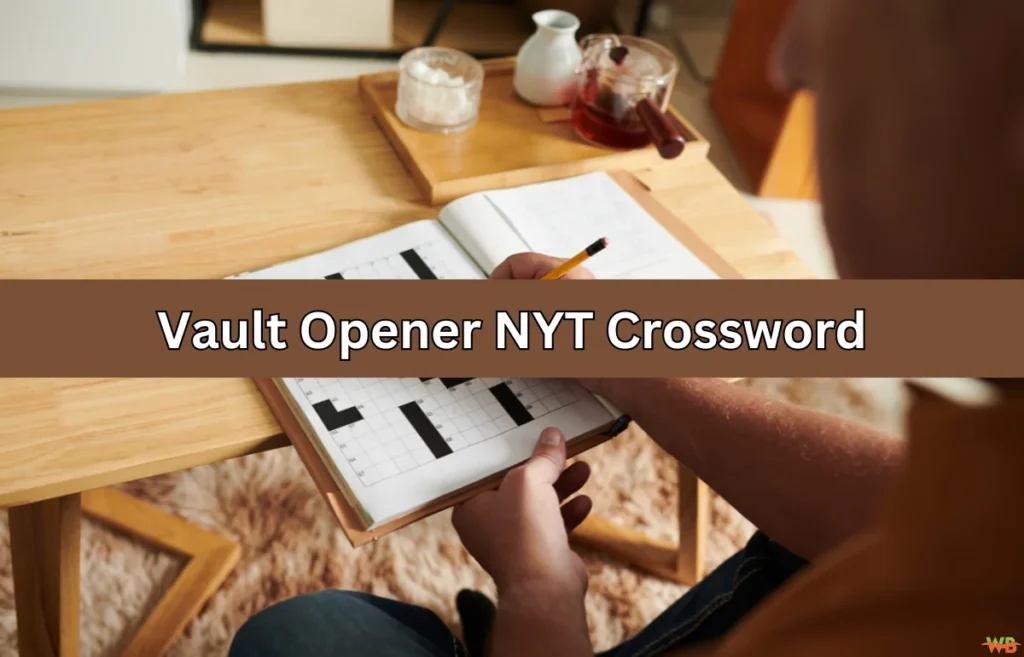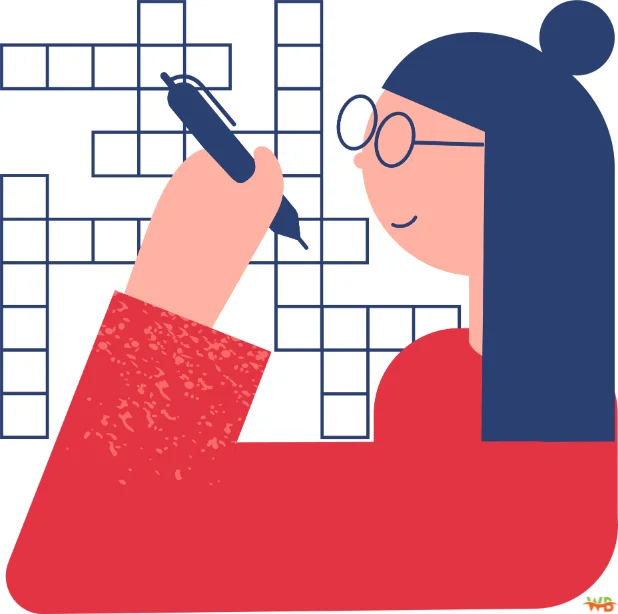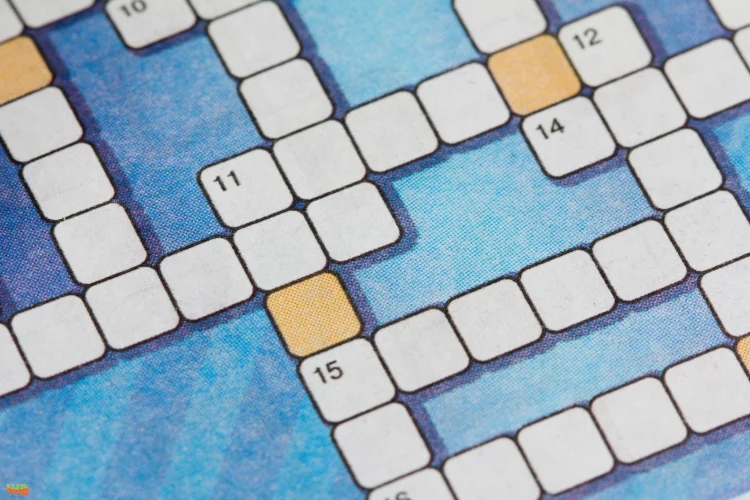Solvers frequently find the “vault opener NYT crossword” clue to be a tricky one. It’s a clue that challenges solvers to think beyond the literal, testing creativity and lateral thinking. Whether you’re a beginner or an experienced solver, mastering this particular clue type can significantly enhance your crossword-solving skills. This guide will walk you through the history, evolution, strategies for solving, and resources that will help you tackle vault opener NYT crossword clues with ease.
Vault Opener NYT Crossword: History and Evolution
Crossword clues are often crafted with great care, with constructors using a variety of techniques to keep solvers engaged and challenged. The vault opener NYT crossword clue, in particular, has evolved over time from simple, literal clues to more complex, metaphorical ones.
Early Days: Literal Interpretations
In the early days of crossword puzzles, clues like “vault opener” often had straightforward, literal answers. For example, the answer might have been “key” or “code”—objects commonly associated with opening a vault. These early clues didn’t require much abstraction and were more about identifying common, everyday items.
The Metaphorical Shift
As crosswords became more sophisticated, constructors began incorporating wordplay into their clues. This shift allowed for more creative interpretations, where the word “vault” didn’t always refer to an actual safe or container but could instead allude to physical actions or abstract concepts.
For example, “vault opener” could now be answered with “POLE” (as in pole vault) or “LEAP,” which requires solvers to think in more abstract terms. This shift made the vault opener NYT crossword clue more exciting and challenging, pushing solvers to think beyond the literal meaning of the words.
Modern Day: Complex Wordplay and Puns
Today, the vault opener NYT crossword clue is often a combination of wordplay, puns, and metaphorical references. Clues might require solvers to consider multiple meanings of the word “vault”—from gymnastics (pole vault), to jumping (leap), to even springing into action (spring). This evolution in crossword construction has made the vault opener NYT crossword one of the most intriguing and fun challenges for solvers.
Strategies for Solving the Vault Opener NYT Crossword Clue
Solving a vault opener NYT crossword clue requires more than just basic crossword skills. It’s about thinking creatively and using a few strategies to help break down the clue. Here are some techniques that can help you decode these tricky clues.
1. Think Metaphorically
The key to solving vault opener NYT crossword clues is to step away from the literal. The word “vault” could be referring to an action rather than an object. For instance, consider a gymnastics-related clue, where the answer might be “POLE” (pole vault) or “LEAP.” Think about how vaults are used in various contexts beyond a physical vault—consider how they relate to jumping, springing, or even rising.
2. Look for Wordplay and Double Meanings
Many crossword clues, especially in the NYT, are constructed to have double meanings. The vault opener NYT crossword clue is no exception. The word “vault” could be referring to a pole vault in sports, or it could refer to a metaphorical leap or spring, as in “LEAP” or “SPRING.” Break down the clue and think of different contexts where the word “vault” could apply.
3. Vault Opener NYT Crossword: Pay Attention to Clue Length
Clue length is an important piece of the puzzle-solving strategy in crossword challenges. In the case of a vault opener clue, if the answer is four letters, you might be looking for a simple object like “POLE.” If it’s five letters, consider thinking about actions or tools involved in vaulting, such as “SPRING” or “LEAP.” Always cross-check the clue length with your potential answers to ensure they fit.
4. Consider the Puzzle’s Theme
Crosswords in the NYT often have a theme, and understanding that theme can help you solve the vault opener NYT crossword clue. For example, if the puzzle has a sports theme, a vault-related clue might refer to “POLE” (as in pole vault) or “BAR” (as in a gymnastic vault bar). By noticing these patterns, you can improve your ability to predict answers.
Decoding ‘Vault Opener’ Clues in New York Times Crosswords
Let’s take a look at some real-world examples of vault opener NYT crossword clues to better understand how they work.
Example 1: Clue: Vault opener (4 letters)
Answer: POLE
Explanation: This clue refers to the pole used in pole vaulting, making “POLE” the perfect answer.
Example 2: Clue: A tool for accessing a vault (4 letters)
Answer: LEAP
Explanation: Here, the clue plays on the metaphor of vaulting—leaping over an obstacle—making “LEAP” the ideal answer.
Example 3: Clue: Part of a jump over a vault (5 letters)
Answer: SPRING
Explanation: This clue alludes to the action of springing over a vault, which makes “SPRING” the correct answer.
These examples show how the vault opener NYT crossword clue can have multiple interpretations, ranging from literal to metaphorical, requiring solvers to apply creative thinking.
Vault Opener NYT Crossword: Resources to Improve Your Crossword Skills
Now that we’ve covered the history, evolution, and strategies for solving vault opener NYT crossword clues, let’s explore some resources that can help you improve your crossword-solving skills.
1. NYT Crossword Archive
The NYT Crossword Archive is a treasure trove of past puzzles, allowing you to practice solving clues like the vault opener NYT crossword. You can revisit old puzzles to sharpen your skills and familiarize yourself with the different ways constructors approach similar clues.
2. Crossword Solver Apps
There are numerous crossword solver apps available, such as the NYT Crossword App, which provides access to daily puzzles and hints to help you solve tricky clues. Apps like Crossword Solver by WordFinder also help with word-related clues, making them useful for tackling crossword clues.
3. Crossword Books
If you prefer a more traditional approach, books like The New York Times Guide to Solving Crosswords provide detailed tips and examples that can help you decode vault opener NYT crossword clues. These books often include explanations of common crossword techniques, which are invaluable for solvers at all levels.
4. Online Crossword Communities
Joining crossword communities allows you to learn from experienced solvers and share insights. Forums like r/Crossword on Reddit or crossword blogs feature discussions about the latest puzzles, offering tips and strategies for solving difficult clues. Learning from other solvers’ experiences can expand your problem-solving toolkit.
Final Thoughts: Mastering the Vault Opener NYT Crossword Clue
A clue like the vault opener NYT crossword challenges solvers to think creatively, showcasing the art of crossword construction. By understanding its evolution, applying the right strategies, and using resources like crossword archives and solver apps, you can greatly improve your crossword-solving abilities.
The most important thing is to keep practicing. The more puzzles you solve, the more you’ll start to recognize patterns and clues, allowing you to solve even the trickiest clues with ease. Happy solving!
FAQs
1. How do I improve my skills in solving difficult crossword clues?
- To improve your crossword-solving skills, start by practicing daily. Focus on learning common clue types, understanding wordplay, and recognizing common patterns in puzzles. Additionally, try solving puzzles in a variety of difficulty levels and use resources like crossword solver apps and crossword-specific books for tips and explanations.
2. Why are certain clues in crosswords so challenging?
- Crossword clues can be tough because they often rely on wordplay, double meanings, puns, and obscure references. Many constructors use these tricks to make the puzzle more engaging and to ensure solvers are thinking creatively. Clues may also require knowledge of specific topics, historical references, or cultural nuances.
3. What is the role of wordplay in crossword puzzles?
- Wordplay is central to many crossword clues. Wordplay is used to create clever connections, such as through puns, reworded meanings, letter swaps, and sound-based clues. Solvers need to think beyond the literal meaning of the clue and consider alternative interpretations, which adds an extra layer of challenge and fun to the puzzle-solving experience.
4. Can solving crossword puzzles help with cognitive function?
- Yes, solving crossword puzzles can be a great exercise for your brain. Engaging with puzzles on a regular basis can improve your ability to think critically and retain information. It also helps enhance focus and concentration, making it a valuable activity for overall cognitive health.
5. Are there different types of crossword puzzle formats?
- Yes, crossword puzzles come in various formats. The most common are standard American crosswords, which have a square grid and specific rules for black-and-white cells. Other formats include cryptic crosswords, which are more complex and require interpreting clues with additional wordplay, and thematic puzzles that follow specific themes throughout the clues and answers.

Ton Roobprom is an experienced writer focused on practical advice across technology, business, travel, beauty, lifestyle, and home improvements. He specializes in distilling complex subjects into clear, actionable insights to help you enhance your daily life.




